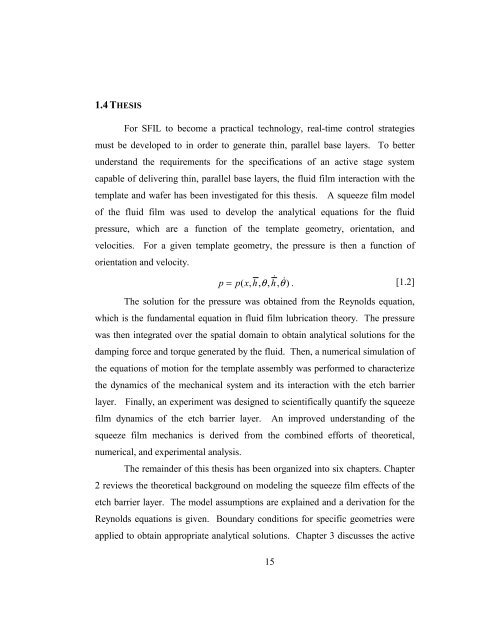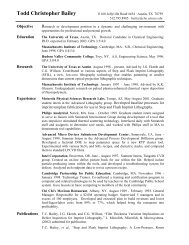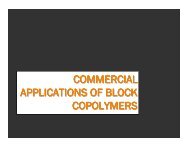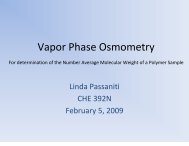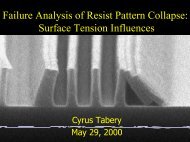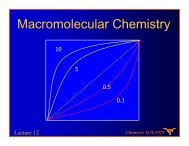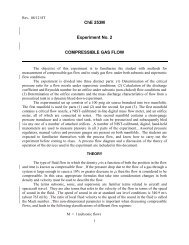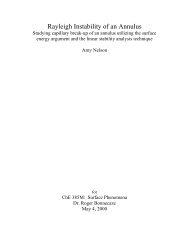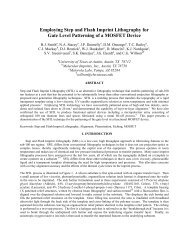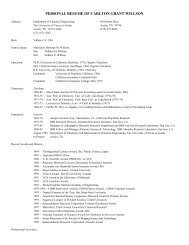Asymmetric fluid-structure dynamics in nanoscale imprint lithography
Asymmetric fluid-structure dynamics in nanoscale imprint lithography
Asymmetric fluid-structure dynamics in nanoscale imprint lithography
- No tags were found...
Create successful ePaper yourself
Turn your PDF publications into a flip-book with our unique Google optimized e-Paper software.
1.4 THESISFor SFIL to become a practical technology, real-time control strategiesmust be developed to <strong>in</strong> order to generate th<strong>in</strong>, parallel base layers. To betterunderstand the requirements for the specifications of an active stage systemcapable of deliver<strong>in</strong>g th<strong>in</strong>, parallel base layers, the <strong>fluid</strong> film <strong>in</strong>teraction with thetemplate and wafer has been <strong>in</strong>vestigated for this thesis. A squeeze film modelof the <strong>fluid</strong> film was used to develop the analytical equations for the <strong>fluid</strong>pressure, which are a function of the template geometry, orientation, andvelocities. For a given template geometry, the pressure is then a function oforientation and velocity.p = p( x,h,θ , hD, θD) . [1.2]The solution for the pressure was obta<strong>in</strong>ed from the Reynolds equation,which is the fundamental equation <strong>in</strong> <strong>fluid</strong> film lubrication theory. The pressurewas then <strong>in</strong>tegrated over the spatial doma<strong>in</strong> to obta<strong>in</strong> analytical solutions for thedamp<strong>in</strong>g force and torque generated by the <strong>fluid</strong>. Then, a numerical simulation ofthe equations of motion for the template assembly was performed to characterizethe <strong>dynamics</strong> of the mechanical system and its <strong>in</strong>teraction with the etch barrierlayer. F<strong>in</strong>ally, an experiment was designed to scientifically quantify the squeezefilm <strong>dynamics</strong> of the etch barrier layer. An improved understand<strong>in</strong>g of thesqueeze film mechanics is derived from the comb<strong>in</strong>ed efforts of theoretical,numerical, and experimental analysis.The rema<strong>in</strong>der of this thesis has been organized <strong>in</strong>to six chapters. Chapter2 reviews the theoretical background on model<strong>in</strong>g the squeeze film effects of theetch barrier layer. The model assumptions are expla<strong>in</strong>ed and a derivation for theReynolds equations is given. Boundary conditions for specific geometries wereapplied to obta<strong>in</strong> appropriate analytical solutions. Chapter 3 discusses the active15


